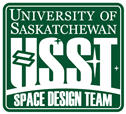 I’ve finally been able to upload the videos of the five runs that USST did on the last day of competition (Monday, October 22nd.) The first video shows a climb in the daylight. Therefore, you can’t actually see the laser-beam as my camcorder shot it in “normal” (i.e. not night) mode. But there is a nice sunset in the background to compensate 🙂
I’ve finally been able to upload the videos of the five runs that USST did on the last day of competition (Monday, October 22nd.) The first video shows a climb in the daylight. Therefore, you can’t actually see the laser-beam as my camcorder shot it in “normal” (i.e. not night) mode. But there is a nice sunset in the background to compensate 🙂
Runs 2 through 5 were all run after nightfall and were shot in night-mode. The laser beam clearly shows and is incredibly futuristic looking.
Runs 1 through 4 were done under competition conditions and any one of them could have won the prize if it had been fast enough. The fifth and last run was done after the time limit had expired. USST ran it anyway, just to see if they could meet the required 2 meters/second condition. You’ll note that in this run, the climber sat motionless for several seconds after the laser beam was applied. It then shot up the ribbon in about 50 seconds. IF this run had been in the required time limit and IF the climber hadn’t sat there for several seconds before moving, this run may have been a winner. I gave a copy of these videos to USST before I left Monday night and I’m sure they’ve been hard at work at analyzing them.
I apologize for the overexposure of the climber in runs 2 through 5 – it’s the best my camcorder can do. The overexposure (and the darkness) prevents one from seeing when the climber actually hits the top of the ribbon. But you can tell when their climber hits the top of the ribbon by the (very) audible noise of two wooden “stops” banging into each other. Because of the earlier ribbon breakage, Spaceward was not able to mount the normal climber “stop” on the ribbon, but actually I liked this jury-rigged one better. The noise made when the climber hits it is quite audible and clearly signals the end of the run.
The videos are shown in the order the runs were made. The first one (the top one in this posting) was Run 1 and the last one (the bottom one in this posting) was Run 5. The fourth climb resulted in their best time, approximately 54 seconds. You’ll hear me in some of the videos saying things like “Mark one-ten” or “You have to finish at two minutes.” The times I’m referring to are the times on the clock on the camcorder – it helped me do some rapid seat-of-the-pants calculations as to how long the actual climb itself was.
I was not the official time-keeper of these runs; that job fell to Ken Davidian, the official NASA representative. When we compared times, however, we were very close.
Enjoy…
[youtube]http://www.youtube.com/watch?v=xOkmIAYBLko[/youtube]
.
[youtube]http://www.youtube.com/watch?v=dPgMNCFFu-E[/youtube]
.
[youtube]http://www.youtube.com/watch?v=ecj8mewR3AI[/youtube]
.
[youtube]http://www.youtube.com/watch?v=jFx_mWCpa9o[/youtube]
.
[youtube]http://www.youtube.com/watch?v=4cuLm1ripyU[/youtube]
